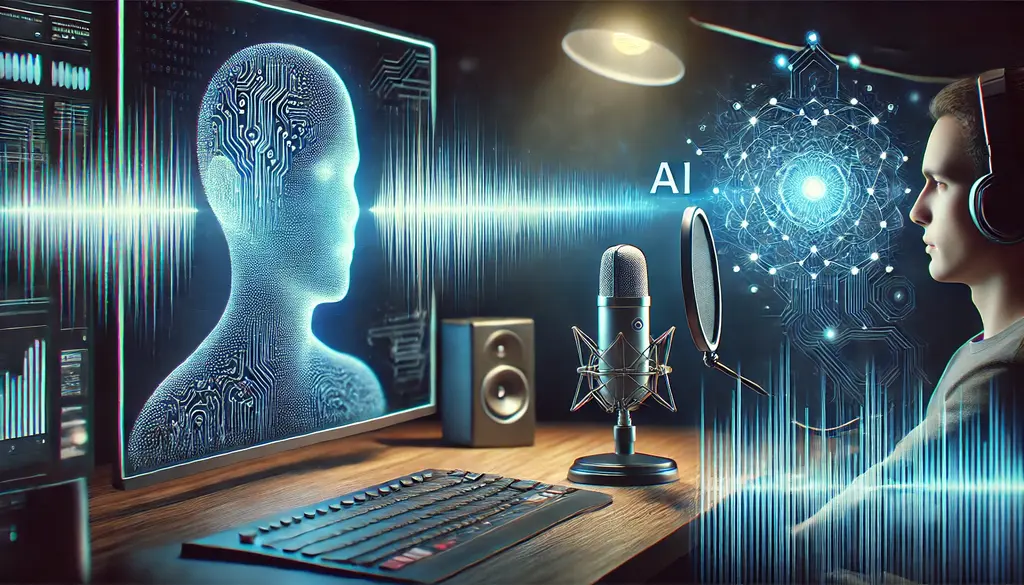Tips for Creating the Best AI Voice Clones in 2025
Voice cloning—the technology that allows for the replication of a person’s voice using artificial intelligence—has seen a rapid rise in popularity over the past few years. Once limited to high-tech... The post Tips for Creating the Best AI Voice Clones in 2025 appeared first on Bigly Sales.

Voice cloning—the technology that allows for the replication of a person’s voice using artificial intelligence—has seen a rapid rise in popularity over the past few years. Once limited to high-tech labs and large corporations, AI voice cloning is now accessible to individuals and small businesses alike.
It’s revolutionizing industries like entertainment, education, and accessibility while opening up exciting possibilities for personalized applications. However, achieving high-quality, realistic voice clones isn’t as simple as pressing a button. It’s a process that demands preparation, attention to detail, and the right tools.
In this article, we’ll dive deep into the world of AI voice cloning. Whether you’re a beginner or an expert looking to refine your skills, this guide will equip you with the knowledge and strategies you need to create outstanding AI voice clones that are indistinguishable from the real thing.
What is AI Voice Cloning?
AI voice cloning is powered by machine learning algorithms that analyze and replicate the distinct qualities of a person’s voice. These algorithms learn from audio recordings, capturing details like tone, pitch, cadence, and even subtle emotional expressions.
Once trained, the AI can generate synthetic speech that mirrors the original voice—whether it’s reading a script, providing instructions, or engaging in a conversational dialogue.
There are two primary approaches to voice cloning:
- Instant Cloning: This method requires only a small amount of input data, such as a few minutes of recorded speech. While it’s quick and easy, the resulting clone may lack depth and nuance.
- High-Fidelity Cloning: This approach involves training the AI on extensive datasets of audio recordings. The process is more time-intensive, but the results are highly realistic, capturing the intricacies of the original voice.
Each method has its strengths and weaknesses, and the choice depends on the specific use case. For casual or experimental purposes, instant cloning may suffice. For professional applications, high-fidelity cloning is often worth the extra effort.
Why Quality Matters in AI Voice Cloning?
The quality of an AI voice clone is critical. A poorly produced voice clone—one that sounds robotic, flat, or unnatural—can ruin the user experience and undermine the credibility of your project.
For example, imagine listening to an audiobook where the narrator’s voice lacks the emotional depth to convey the story’s mood. Or consider a customer service chatbot with a stiff, unconvincing voice. In both cases, low-quality voice cloning can do more harm than good.
On the other hand, high-quality voice clones deliver a seamless, engaging experience. They sound natural and authentic, creating a stronger connection with the listener.
Whether you’re producing content for entertainment, education, or business, prioritizing quality ensures your audience stays engaged and leaves with a positive impression.
Preparing for AI Voice Cloning
Before diving into the technical aspects of voice cloning, it’s essential to set yourself up for success. Preparation plays a significant role in determining the quality of the final output.
Create the Ideal Recording Environment
The first step is choosing a suitable space for recording. Even the most advanced AI algorithms can’t compensate for poor-quality input, so it’s crucial to eliminate background noise, echoes, and other distractions.
Look for a quiet room and consider using soundproofing materials like foam panels, carpets, or curtains to minimize unwanted noise.
Invest in Professional Equipment
A high-quality microphone is a must-have for capturing clear, detailed audio. USB microphones are an excellent option for beginners, offering simplicity and affordability, while XLR microphones provide superior sound quality for more advanced users.
Accessories like pop filters and shock mounts further enhance recording quality by reducing plosive sounds and vibrations.
Plan Your Recordings
Successful voice cloning starts with well-organized, high-quality audio samples. Prepare a script that includes a variety of sentences, capturing different tones, emotions, and speech patterns. This diversity ensures the AI can learn the full range of vocal characteristics needed for an authentic clone.
Speak clearly and naturally, maintaining a consistent tone and volume throughout the recording sessions. It’s also a good idea to record in multiple sessions to avoid vocal fatigue.
How to Create the Best AI Voice Clones?
To create a voice clone that stands out for its realism and quality, you need to follow a combination of technical best practices and strategic decision-making. Here’s how:
Provide High-Quality Training Data
The saying “garbage in, garbage out” applies here. The quality of your training data directly affects the AI’s output. Use recordings that are crystal-clear and free of background noise.
Aim for a diverse dataset that includes sentences spoken at different speeds and with varying emotions. This variety gives the AI the flexibility to produce a more dynamic and realistic voice.
Maintain Consistency
AI models thrive on consistency. When recording, ensure your pitch, pace, and pronunciation remain steady. Consistency makes it easier for the AI to identify patterns in your voice, resulting in a more accurate clone. Avoid abrupt changes in tone or delivery that might confuse the algorithm.
Choose the Right Tools
There are several AI voice cloning platforms to choose from, each with its strengths. Tools like Respeecher, Play.ht, and Descript are renowned for their ease of use and high-quality results.
These platforms often include features like real-time voice synthesis, multilingual support, and advanced customization options. Explore their capabilities and select the one that best fits your goals.
Test and Refine
Once your initial voice clone is complete, test it extensively. Listen to how it performs in different contexts and identify areas for improvement. Many AI tools allow you to tweak parameters, such as pitch or speed, to fine-tune the output. Iteration is key to achieving a polished, professional result.
Follow Ethical Guidelines
With great power comes great responsibility. Always obtain consent before cloning someone’s voice, and avoid using the technology for deceptive or malicious purposes. Ethical practices not only protect your reputation but also contribute to the responsible development of AI.
Overcoming Challenges in AI Voice Cloning
While AI voice cloning has made remarkable progress, it’s not without challenges. Here are some common obstacles and how to address them:
Audio Quality Issues
Poor-quality recordings can lead to robotic or distorted clones. To avoid this, invest in high-quality equipment and create a controlled recording environment. If you’re working with existing audio, use noise-reduction software to clean up the files.
Accents and Dialects
Cloning voices with strong accents or unique dialects can be tricky. These require additional training data and more advanced AI models. Providing the AI with extensive, high-quality recordings of the accent in question can significantly improve results.
Managing Expectations
While modern AI can produce astonishingly realistic voice clones, it’s not perfect. Some voices may require extensive customization to achieve the desired level of authenticity. Be patient and open to experimentation as you refine your clone.
Applications of AI Voice Cloning
AI voice cloning is transforming the way we communicate and create content. Here are some of its most impactful applications:
Entertainment
In film and television, voice cloning is used for dubbing, voiceovers, and recreating the voices of actors. Video game developers use it to bring characters to life, while audiobook publishers create engaging, lifelike narrations.
Business
Companies use AI voice cloning to personalize customer interactions, automate call centers, and enhance marketing campaigns. Virtual assistants powered by cloned voices offer a human touch that improves user engagement.
Accessibility
For individuals with speech impairments, voice cloning provides a way to communicate in their unique voice. This technology is also used to create personalized educational tools and assistive devices for people with disabilities.
Education
E-learning platforms leverage voice cloning to produce multilingual content, making education more accessible to diverse audiences. Teachers and trainers can use AI-generated voices to create engaging lessons and tutorials.
Conclusion
Creating the best AI voice clones is both an art and a science. It requires careful preparation, the right tools, and a commitment to quality. By following the steps outlined in this guide, you can produce voice clones that are realistic, engaging, and tailored to your specific needs.
Whether you’re a content creator, entrepreneur, or enthusiast, voice cloning offers endless opportunities to innovate and connect with your audience. By understanding the process, prioritizing ethical practices, and staying up-to-date with advancements, you can unlock the full potential of this transformative technology.
The possibilities are vast, from enhancing creative projects to solving real-world problems, but the key lies in how responsibly and effectively you use this tool. With the right approach, AI voice cloning can not only replicate voices but also amplify human experiences in ways we’ve never seen before.
The post Tips for Creating the Best AI Voice Clones in 2025 appeared first on Bigly Sales.


















![[The AI Show Episode 129]: OpenAI o3, Superintelligence, AGI Policy Implications, New Altman Interview on Musk Feud & GPT-5 Behind Schedule](https://www.marketingaiinstitute.com/hubfs/ep%20129%20cover.png)


